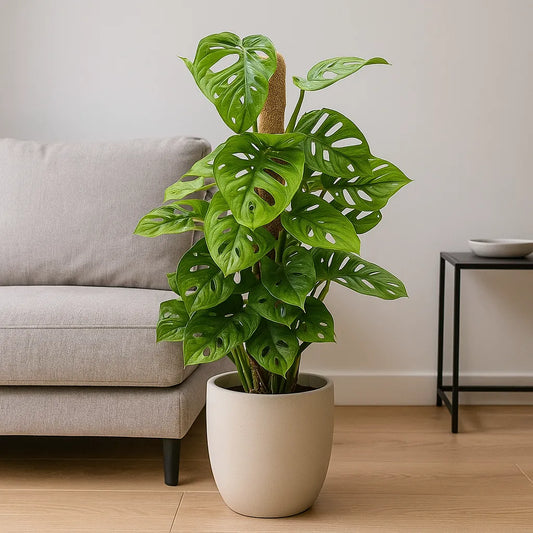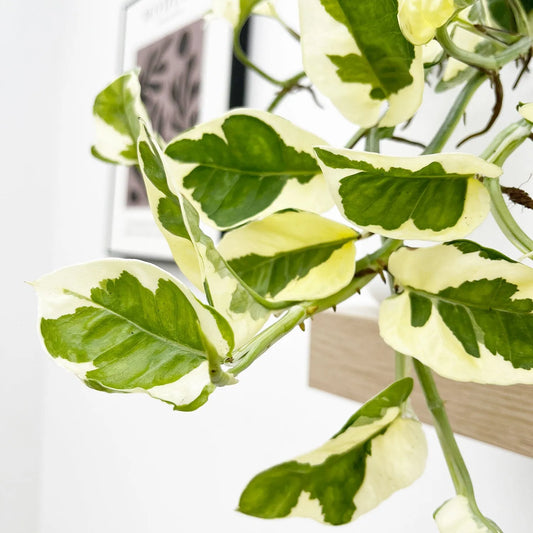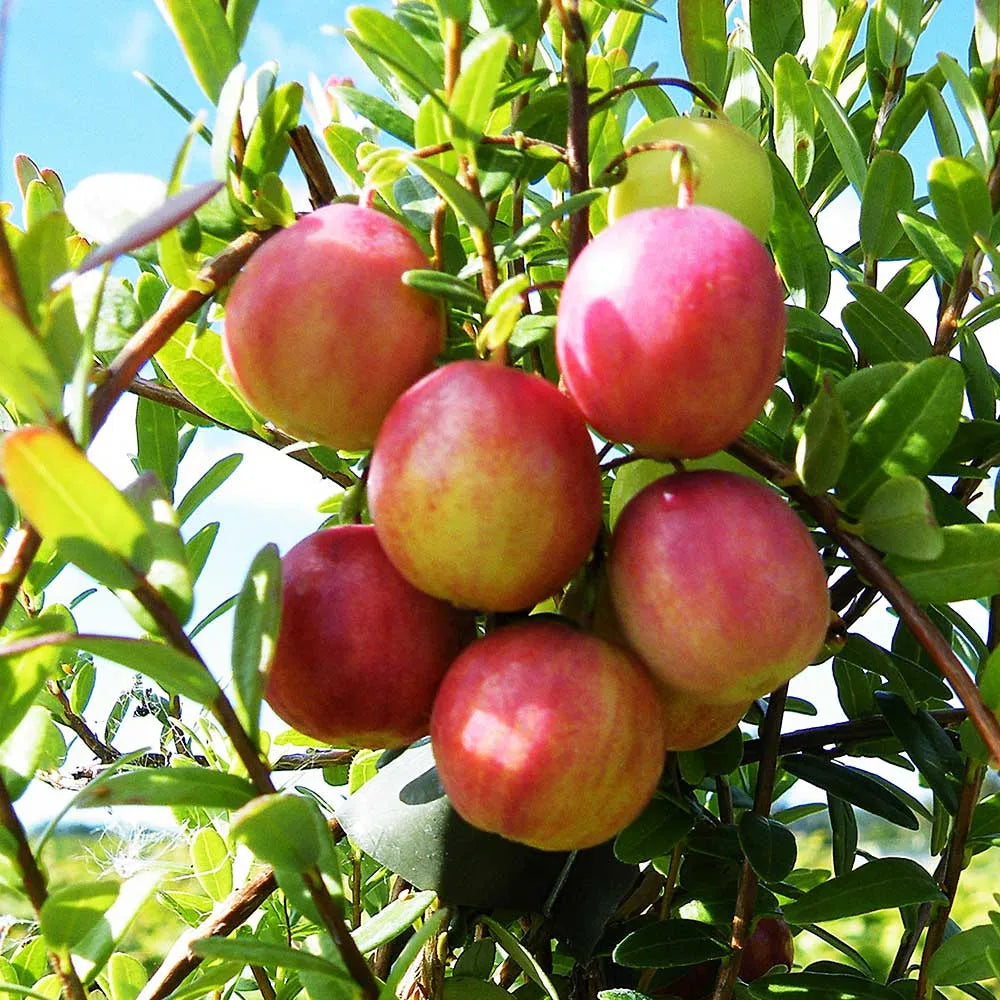

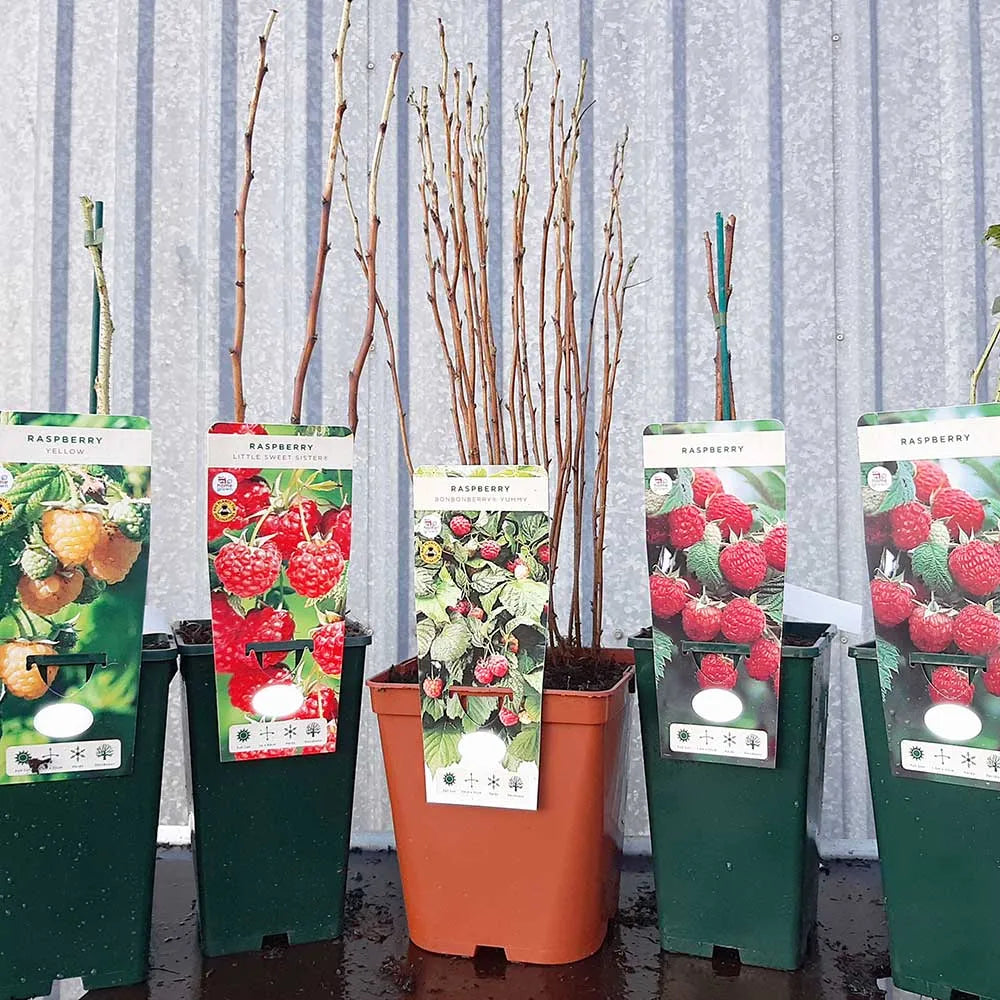
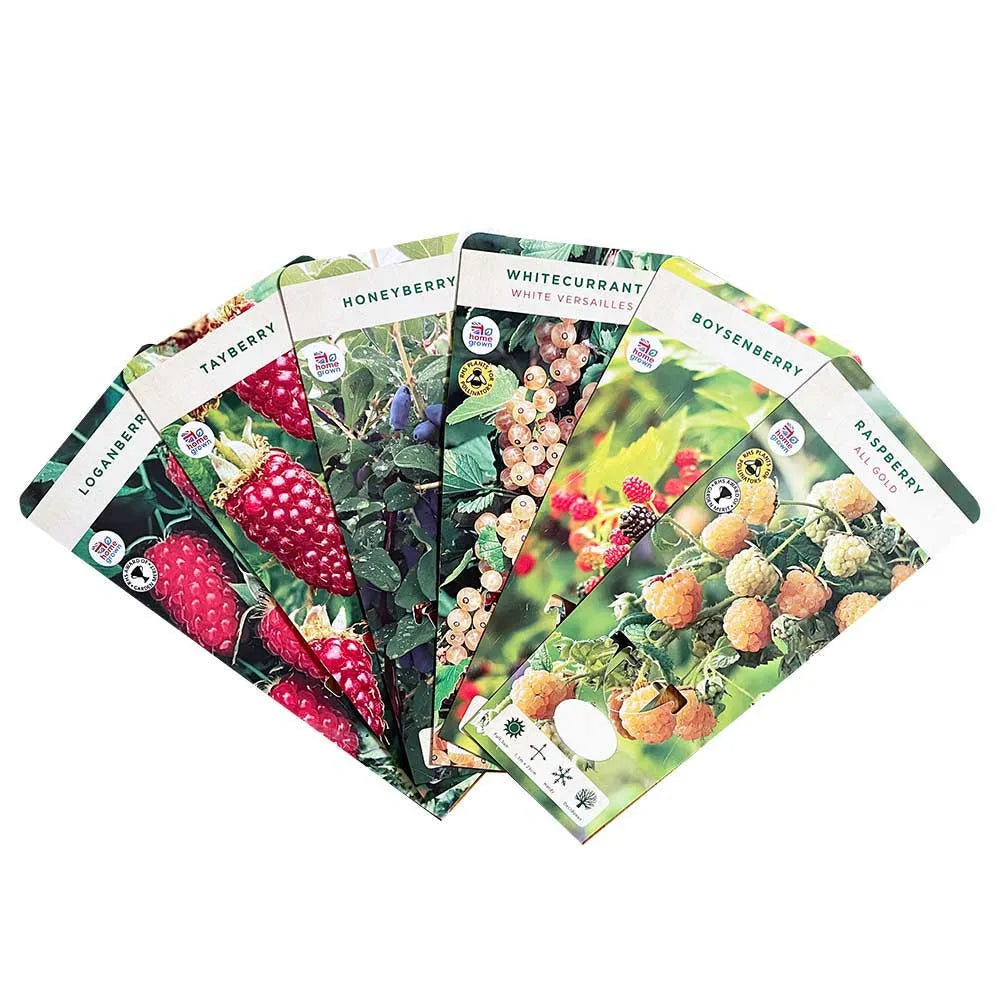
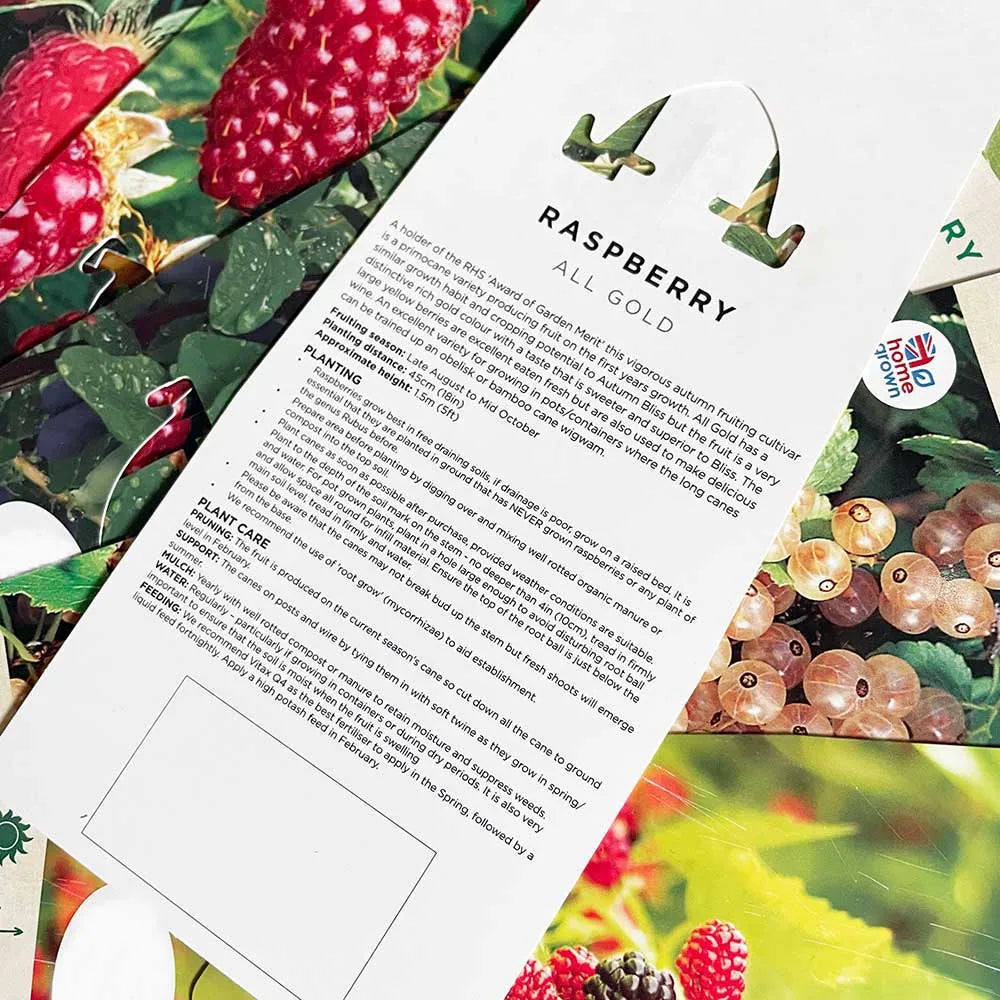
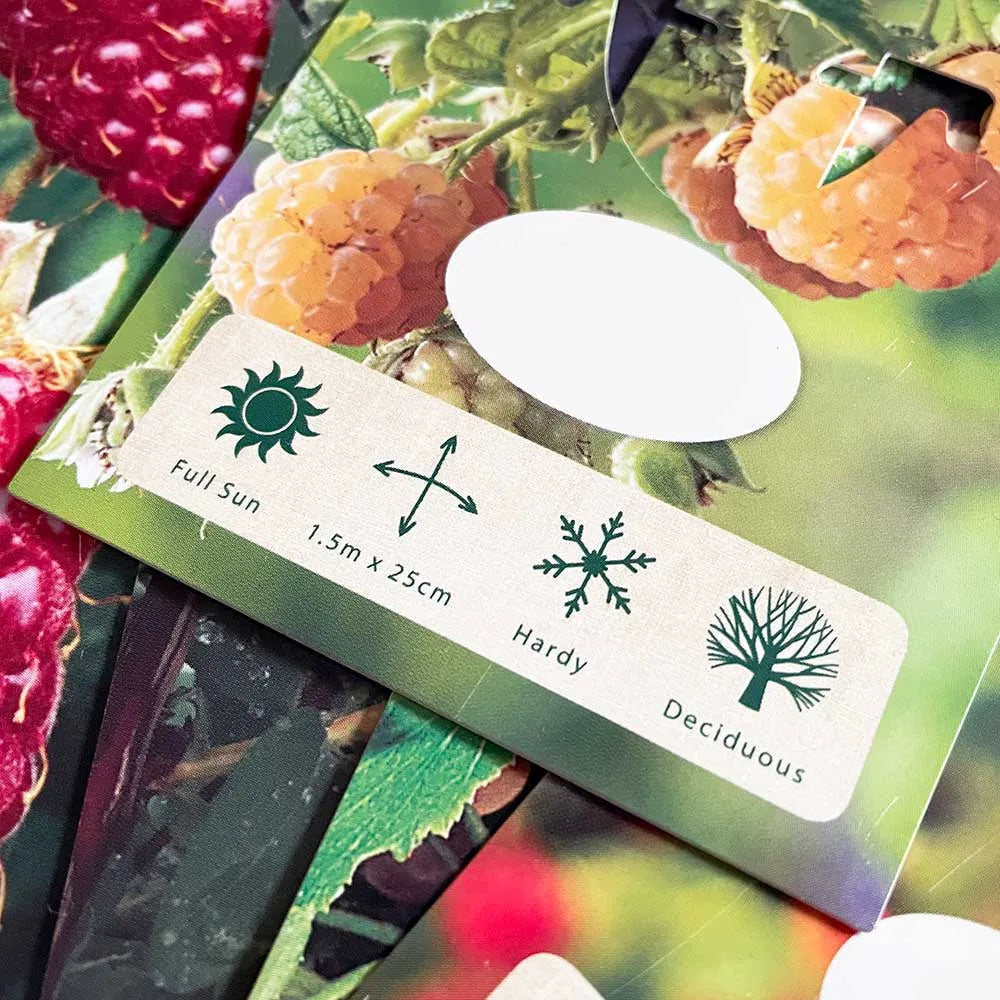
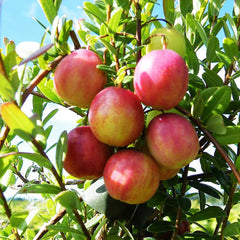

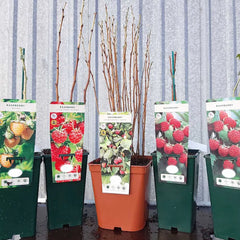
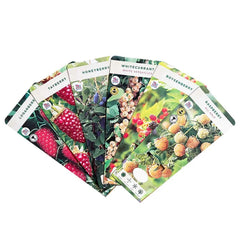
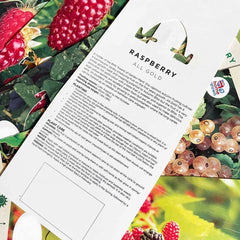
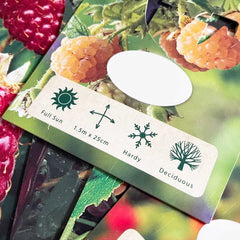
Cranberry Pilgrim (Vaccinium Macrocarpon) Fruit Bush 3ltr Pot
- £12.99
- £12.99
- Unit price
- per
Live Delivery Guarantee
At Plants for all Seasons, we stand behind the quality and vitality of every plant we deliver, which is why we proudly offer a Live Delivery Guarantee. This commitment means that we guarantee your plants will arrive at your doorstep in healthy, thriving condition. We understand the importance of receiving your plants in the best possible state, ready to enhance your space from the moment they arrive. With Plants for all Seasons's Live Delivery Guarantee, you can shop with complete peace of mind, knowing that your green investments are protected from our nursery to your doorstep.
30 Days Returns
Due to the sensitive and breakable nature of our products, it's understandable that damages may occur despite our meticulous packaging methods. If you find that your plant or pot has arrived in a less than satisfactory condition, please reach out to us at hello@plantsforallseasons.co.uk within a month of your delivery date. When contacting us, please provide your order reference, alongside a photo clearly showing the damaged item and its packaging, including the delivery label. We are committed to resolving such issues by offering a refund or a replacement, depending on the availability of the item in question.
We are unable to accept returns that are not related to damage because plants are inherently perishable and delicate. It's also worth noting that the plant you receive may slightly differ from the images displayed on our website. This variation is natural, given that each plant is unique and subject to seasonal growth changes.
Safe and Secure Delivery
At Plants for all Seasons, we recognise the critical role our courier partners play in ensuring the safe and secure delivery of your plants. We collaborate exclusively with leading courier services, renowned for their reliability and exceptional handling practices, to ensure your plants arrive in perfect condition. Our partners are carefully selected based on their commitment to timely deliveries and their proven track record in transporting delicate items with the utmost care.
Bespoke Eco Packaging
At Plants for all Seasons, our commitment to the environment extends to every aspect of our operations, especially in how we deliver your plants. We take pride in our bespoke, eco-friendly packaging, meticulously designed for the safe transport of live plants. Our innovative packaging solutions are crafted from sustainable materials, ensuring that your plants are not only secure but also that their journey from our nursery to your home treads lightly on the earth. This thoughtful approach minimises stress on the plants and reduces waste, aligning with our mission to promote a greener, more sustainable future.
Free Delivery Over £100
At Plants for all Seasons, we're delighted to offer our customers an exclusive perk: free delivery on all orders over £100. No matter how many plants you fall in love with, if your total reaches £100, the delivery is on us. This offer is our way of saying thank you for choosing us for your greenery needs and to make it easier for you to welcome more of nature’s beauty into your home without worrying about additional costs. Our commitment to providing value doesn't stop at our plant selection; it extends to ensuring that your chosen foliage arrives at your doorstep with care and precision, completely free of charge for qualifying orders. Enjoy the convenience of selecting from our wide range of plants, safe in the knowledge that your delivery costs are covered when you meet the threshold. It’s our way of helping you create your ideal green space, seamlessly and affordably.
Delivered within 3-4 working days
About Cranberry Pilgrim
Pilgrim produces one of the largest and reddest fruits of any cranberry. It has a low growing spreading habit with attractive bronze coloured evergreen leaves – leathery intexture – that turn a rich red in autumn and winter. Pink red flowers in mid summer are followed by glossy, dark red berries with a distinctive tart flavour. Ideal for culinary use in sauces, compotes or juicing. The berries are rich in vitamin C and antioxidants. Suited to container growing and will also do very well in hanging baskets that suits its cascading habit. Pilgrim is one of the few cranberries that does not require boggy, saturated soil to produce high yields, acidic soil however is essential. Where conditions allow, Pilgrim will grow into an attractive sprawling and ornamental plant giving excellent ground coverage.
- Self fertile
- Planting Distance 1.5m apart
- Height & Spread 1.m x 1m
- CropsSeptember/ October
"Popular as part of a Christmas dinner, the cranberry Is one of the most popular berries in the UK. The pilgrim is one of the largest and easiest to grow varieties of cranberry and will produce its light-red berries from late September to October. The low sugar content of the cranberry produces a tart fruit which is full of antioxidants and are great for controlling blood sugar and general health. In the kitchen, the obvious choice is to make a fantastic cranberry sauce to go with your Christmas dinner, but it goes well with brie and rosemary to have a fantastic party snack or as part of a cake or cheesecake. Alternatively, you can boil the fruit down into a jam or chutney or juice them for a healthy breakfast drink. The herbaceous bronze evergreen leaves grow in a thick bush that supports the clusters of red fruit, and in mid-summer will produce pink-red flowers which will fall off to make way for the berries.
How to look after cranberries
Plant in an acidic soil that receives full-sun or dappled shade throughout the day. This cranberry is perfect for beds, borders or containers, but wherever you plant it is best to treat the soil with humus before planting. Water well with rainwater to keep the soil moist, but not wet, it is commonly believed that cranberries require boggy soil to grow but to wet a soil will cause root rot. If possible, try not to water with tap water as it usually contains lime which will slowly remove the acidity of the soil. Keep the area around the plant well weeded in the first year as they do not cope well with the competition. In November, mulch around the base of the shrub to protect against the cold.
When should I harvest my cranberries?
Your cranberries will be ready to harvest when the berries are firm and an even bright red colour all over. Another test is to see if one of the fruits bounces – when ripe it will bounce. If you wait until the first frost of the year, the berries will sweeten slightly. To harvest the berries simply pick them off the stem.
How to preserve your cranberries
If you want to preserve your cranberries so you have a supply for the whole year you have a few options available to you, note you should wash your fruits before preserving I any way. Freezing is the simplest way of preserving the fruit. They will keep for up to a year in a sealed freezer bag. Another way of preservation is to dry the fruit. First blanch in a bowl of boiling water for a minute. Then Let the berries sit in a bowl of water that is one part water to parts sugar for five to ten minutes. Drain off the syrup and pat dry and place in a very low oven on a lined baking sheet for 8-12 hours. Use your dried fruit in a muesli or as a healthy snack."
Upright and Fresh: Our innovative design ensures that your plants remain upright and fresh during transit. Specially engineered compartments and supports within the box prevent movement and damage, so your plants arrive in perfect condition.
100% Recyclable: Our plant boxes are fully recyclable, ensuring that after they have served their purpose, they can be responsibly disposed of without harming the planet.
Made from Recycled Materials: Sustainability is at the core of our values. That’s why our packaging is crafted from recycled materials, reducing waste and promoting a circular economy.
Winter Shipping: We offer additional heat packs in winter to keep your plants nice and warm on their travels. Add one heat pack per plant when checking out in winter months.
By choosing our products, you are not only enhancing your home with beautiful plants but also contributing to a greener, more sustainable future
Check out our YouTube video to see exactly how we pack for safe delivery.
At Plants for all Seasons, we are proud to offer a variety of fruit bushes that are grown right here in the UK. Our locally-grown fruit bushes are adapted to the British climate, ensuring they thrive in your garden and provide bountiful harvests year after year.
Benefits of UK-Grown Fruit Bushes
Climate Adaptation: Our fruit bushes are cultivated in conditions similar to those in your garden, making them better suited to withstand local weather patterns and seasonal changes.
Sustainability: By choosing UK-grown fruit bushes, you support local growers and reduce the environmental impact associated with long-distance transportation.
Quality and Freshness: Growing our fruit bushes in the UK allows us to maintain strict quality control, ensuring that each plant is healthy, vibrant, and ready to produce delicious fruit.
Our Commitment to Excellence
Our experienced growers are dedicated to cultivating a wide variety of fruit bushes, from classic favourites like blackberries and raspberries to unique and rare varieties. Each plant is carefully tended to, ensuring it reaches you in optimal condition.
Whether you're looking to add a fruitful hedge, create a bountiful garden, or simply enjoy homegrown produce, our UK-grown fruit bushes are the perfect choice. Trust Plants for all Seasons for quality plants that will bring beauty and productivity to your garden for years to come.
Non-Consumable: Please note that our plants are intended for ornamental purposes only unless specifically stated as edible. Ensure you check product descriptions carefully if you are looking for edible varieties.
Variable Heights: The height of our plants can vary by approximately +/- 10%. This natural fluctuation ensures you receive a unique and healthy specimen.
Plant Pot Sizes: Pot sizes may vary by approximately +/- 1cm. To ensure a proper fit, we recommend selecting a decorative pot that is 1-2cm larger than the stated plant pot size. For instance, if you purchase a plant in a 17cm pot, a 18 - 19cm decorative pot would be ideal.
Blueberry Plants
View all Blueberry Plants- £12.99
- £12.99
- Unit price
- per
- £12.99
- £12.99
- Unit price
- per
- £12.99
- £12.99
- Unit price
- per
- £12.99
- £12.99
- Unit price
- per
- £12.99
- £12.99
- Unit price
- per
- £12.99
- £12.99
- Unit price
- per
- £12.99
- £12.99
- Unit price
- per
- £12.99
- £12.99
- Unit price
- per
- £12.99
- £12.99
- Unit price
- per
Rhubarb Fruit Plant
View all Rhubarb Fruit Plant- £12.99
- £12.99
- Unit price
- per
- £12.99
- £12.99
- Unit price
- per
- £12.99
- £12.99
- Unit price
- per
- £12.99
- £12.99
- Unit price
- per
- £12.99
- £12.99
- Unit price
- per
- £12.99
- £12.99
- Unit price
- per
Raspberry Plants
View all Raspberry Plants- £12.99
- £12.99
- Unit price
- per
- £9.99
- £9.99
- Unit price
- per
- £12.99
- £12.99
- Unit price
- per
- £12.99
- £12.99
- Unit price
- per
- £12.99
- £12.99
- Unit price
- per
- £9.99
- £9.99
- Unit price
- per
- £9.99
- £9.99
- Unit price
- per
- £12.99
- £12.99
- Unit price
- per
- £9.99
- £9.99
- Unit price
- per
- £12.99
- £12.99
- Unit price
- per
- £12.99
- £12.99
- Unit price
- per
- £12.99
- £12.99
- Unit price
- per
- £12.99
- £12.99
- Unit price
- per
- £12.99
- £12.99
- Unit price
- per
- £12.99
- £12.99
- Unit price
- per
- Choosing a selection results in a full page refresh.


